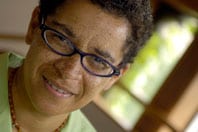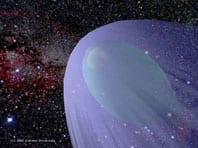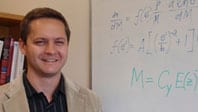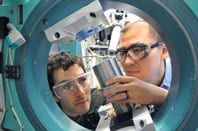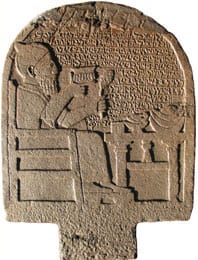Research and Discovery
Goldsby Illuminates African American Writing Renaissance
It’s not as well-known as the Harlem Renaissance, but Chicago also experienced a tremendous flowering of African American writing, which Jacqueline Goldsby is now bringing to light. Goldsby, Associate Professor in English Language & Literature, found that the Book Review and Lecture Forum, anchored at the Chicago Public Library’s George Cleveland Hall Branch in the heart of the Bronzeville neighborhood, was one of the most important manifestations of this more egalitarian Chicago-style renaissance of the 1930s.
Goldsby was also instrumental in organizing, preserving, and finding a home for the personal and professional documents of the family that founded America’s preeminent black newspaper, the Chicago Defender. Her work with the documents convinced their owner and heir, Robert A. Sengstacke, to donate his family’s massive collection to the Chicago Public Library’s Vivian G. Harsh Research Collection of Afro-American History.
Chicago Center for Systems Biology to Study Gene Networks
The National Institute of General Medical Sciences has awarded more than $15 million to support the new Chicago Center for Systems Biology. The center will study how networks of genes work together to enable cells and organisms to respond to environmental and genetic change. One of 10 National Centers for Systems Biology and the only such center in Illinois, it will combine experimental and computational tools to investigate the dynamic behavior of gene networks. “Our goal is to understand the principles that transcriptional regulatory networks share as they respond to different types of environmental and genetic variation,” said Center director Kevin White, the James and Karen Frank Family Professor in Human Genetics and Director of the Institute for Genomics & Systems Biology. The Chicago Biomedical Consortium, with support from the Searle Funds at the Chicago Community Trust, is also providing $3 million over three years to the new initiative.
New $11 Million Center Will Speed Drug Discovery
Scientists from the University of Chicago, Northwestern University, and the University of Illinois at Chicago have joined forces to establish the Chicago Tri-Institutional Center for Chemical Methods and Library Development. The center will develop new ways of building state-of-the-art chemical libraries that will help identify new compounds for future drug development and basic biomedical research. Support includes a $9.2 million grant from the National Institutes of Health and a $2 million Lever grant from the Chicago Biomedical Consortium, which is funded by the Searle Funds at the Chicago Community Trust.
Paleontologists Discover Snapshot of Dinosaur Social Behavior
Some 90 million years ago, a herd of young birdlike dinosaurs met their death on the muddy margins of a lake in the Gobi Desert in western Inner Mongolia. It was there that Chinese and American paleontologists—among them UChicago’s Paul Sereno, Professor in Organismal Biology & Anatomy—discovered these juveniles of a single species of ornithomimid dinosaur (Sinornithomimus dongi). The herd suggests that these immature individuals were left to fend for themselves when adults were preoccupied with nesting or brooding.
Maps of the Heliosphere Show Colliding, Mixing Particles
The first all-sky maps of the sun’s domain—the heliosphere—reveal a surprise: a dominant, giant ribbon of energetic neutral atoms extending throughout the sky in an arc that is 300 degrees long. The discovery is based mostly on data collected from NASA’s Interstellar Boundary Explorer (IBEX) satellite. Priscilla Frisch, Senior Scientist in Astronomy & Astrophysics, is a member of the IBEX science team.
NIH Funds New Center for Herbal Research on Colorectal Cancer
The National Center for Complementary and Alternative Medicine has awarded $6 million over five years to create the Center for Herbal Research on Colorectal Cancer. The center’s researchers will study the anti-tumor effects of different preparations of the herbs American ginseng (Panax quinquefolius) and notoginseng (Panax notoginseng), which are widely used but little-studied herbal therapies for a variety of ailments, including prevention and treatment of colon cancer. At least one-third of adults in the United States take some sort of dietary supplement, says center Director Chun-Su Yuan, the Cyrus Tang Professor in Anesthesia & Critical Care, but herbal research is still in its infancy.
Cosmologists Confirm Acceleration of Universe’s Expansion
An international team of cosmologists that included UChicago’s Andrey Kravtsov confirmed the accelerating expansion of the universe by tracing the evolution of galaxy clusters, the largest visible masses in the cosmos that are held together by gravity. The observation was first made a decade ago by astronomers who were studying the relatively uniform brightness of exploding stars to estimate cosmic distances.
Student Fills in Puzzling Evolutionary Gap
While digging through museum collections of fossilized underwater flatfish, Matt Friedman, graduate student in evolutionary biology, discovered something not yet on scientific record. He noticed that the flatfish fossils preserved in 50-million-year-old limestone from the Eocene epoch didn’t look like contemporary flatfish. Instead of two eyes on top of their flattened heads, they showed transitional forms with one eye only partially displaced.
Oriental Institute Takes Persian Empire into Digital Age
Researchers led by OI Director Gil Stein and Matthew Stolper are digitally recording thousands of ancient tablets from the palaces of Persepolis. With either impressed cuneiform texts or inked texts as well as seal impressions, the tablets include language and art from the center of the Persian Empire, made when it extended from India and Central Asia to Egypt and the Mediterranean. The digitized images will enable scholars and viewers across the world to examine them as if they had picked them up and rotated them under a light.
Loneliness Linked to Poor Health in Older Adults
Having few close friends contributes to poorer health for many older adults but, researchers have found, feeling lonely poses an even greater risk. In the first study to examine the relationship between health and two different types of isolation, sociologist Linda Waite, a leading expert on aging, found that older adults who feel most isolated report 65 percent more depressive symptoms than those who feel least isolated, regardless of their actual levels of connectedness.
Scientists Reach Milestone in Study of Emergent Magnetism
Studying simple metallic chromium, scientists at Argonne National Laboratory and the University of Chicago have discovered a pressure-driven quantum critical regime and achieved the first direct measurement of a “naked” quantum singularity in an elemental magnet. Like many elements, chromium has been extensively studied for decades and a discovery of this magnitude in an element is particularly important. The scientists developed their techniques for high precision measurement of condensed matter for use at Argonne’s Advanced Photon Source. Their precision and control rates are now approaching the level of more conventional techniques such as magnetic varying field and temperature.
Researchers Find Way to Help Stem Cells Fight Cancer Invaders
Medical Center researchers have learned how leukemia takes over privileged “niches” within bone marrow, a finding that could help develop treatment strategies to protect healthy blood-forming stem cells and improve the outcomes of bone marrow transplantation for leukemia and other types of cancer. Study author Dorothy Sipkins and her colleagues found they could block one of the chemical signals released by leukemic cells, thereby preventing the cells that mature to become red and white blood cells from being shut down by the cancerous invader.
Iron Age Stele Shows Belief That Soul Lived in the Stone
An Oriental Institute expedition in southeastern Turkey discovered an Iron Age chiseled stone slab that provides the first written evidence in that region that people believed the soul was separate from the body. The Neubauer Expedition, led by David Schloen, found the 800-pound basalt stele, 3 feet tall and 2 feet wide, at Zincirli, site of the ancient city of Sam’al. Once the capital of a prosperous kingdom, it is now one of the most important Iron Age sites under excavation.
Comet Dust Reveals Clues to Origins of Solar System
Are icy comets the “children” of the sun? Geophysicist Steven Simon, with co-author and UChicago colleague Lawrence Grossman, and other collaborators, examined a few tiny particles from comet Wild 2 to learn how the violent convulsions of a giant cloud of gas and dust may have birthed the sun and spawned comets. They studied the first verified samples of a comet ever returned to Earth by a spacecraft.
Sleep Is Good for the Arteries
People who sleep less than five hours a night have increased risk for calcified arteries, according to a study directed by Diane Lauderdale, Associate Professor in Health Studies. A study of healthy volunteers in their 40s found that calcified arteries were found in 27 percent of those who slept less than five hours a night. That dropped to 11 percent for those who slept five to seven hours and fell to 6 percent for those who slept more than seven hour a night. Though the benefits did not vary according to race, they did appear to be greater for women.
Expedition Finds Clues to Emergence of Urban Life
While archaeologists of Egypt have long focused their interests on monumental architecture, ancient residential communities have been neglected. Now a team directed by Nadine Moeller has unearthed a large administration building and silos at Tell Edfu that provide fresh clues about the development of cities. Edfu is one of the very few remaining city mounds accessible for scientific study in Egypt.
Physicists Harness Effects of Disorder in Magnetic Sensors
Newly developed magnetic sensors could help engineers surpass the efficiency of the internal combustion engine and lead to high-efficiency ceramic engines in future cars and aircraft. UChicago’s Thomas Rosenbaum and associate Jingshi Hu of MIT discovered the formula for fabricating the sensors. It involves slightly diluting samples of a well-known semiconductor material called indium antimonide.
Federal Stimulus Funds Support Research, Public Engagement
University researchers had received $71.5 million in federal stimulus money as of September 30, 2009. The funding in 150 grants from three agencies under the American Recovery and Reinvestment Act will create or preserve 79 jobs in the first year. In addition to basic research, grants cover outreach to students in the Chicago Public Schools and the University’s Laboratory Schools.
Of the $71.5 million, $42 million will be used for biological and medical research, the most awarded to any Illinois research institution. The funding from the National Institutes of Health is part of a $5 billion boost for medical research from the federal economic stimulus package.
A scientific visualization of the heliosphere’s orientation in the Milky Way galaxy, showing the constellation Orion
